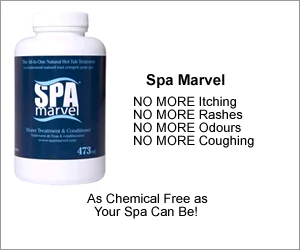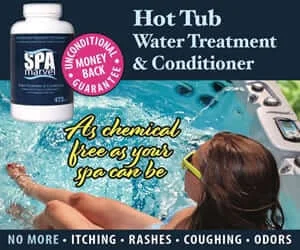The Ultimate Hot Tub Buying Guide
Determining how to choose a hot tub and what is the best hot tub for the money can be a daunting task. To simplify the process, we’ve put together this hot tub guide so you can determine the most reliable hot tubs to fit your needs and budget.
When weighing out different types of hot tubs and deciding what is the best hot tub to buy, there are 11 factors to consider:
1. Dealer
2. Hot tub shell construction
3. Insulation
4. Quality parts
5. Plumbing
6. Heat recovery system
7. Filtration System
8. Therapeutic needs vs. entertainment needs
9. Location for the hot tub
10. Accessory components
11. Warranty
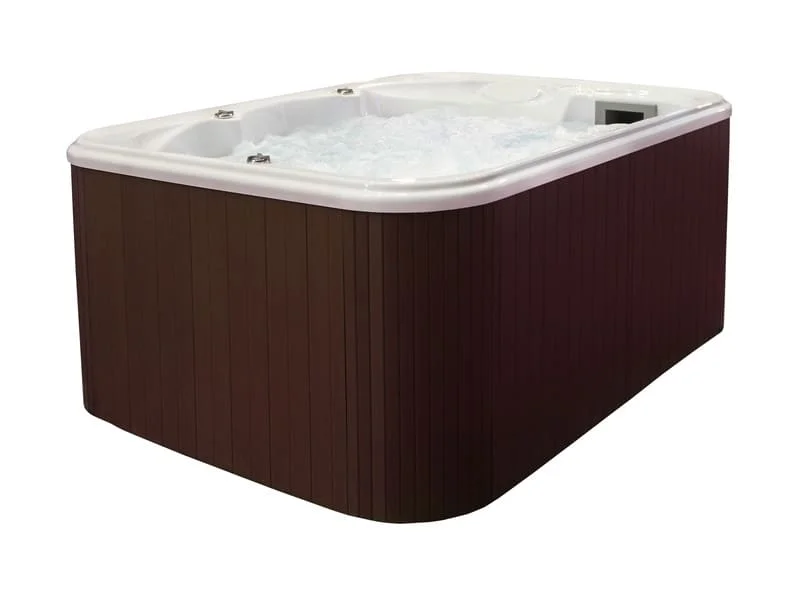
SELECTING A SPA DEALER
Someone once said that they’d rather buy a lesser-quality spa from a great dealer than buy a higher-quality spa from a bad dealer.
Whether your new spa requires an adjustment on the first day or something major fails ten years down the road, you want to make sure you can get it taken care of. For this reason, many people like to purchase a spa from a reputable dealer that is close enough to look after the spa in the future.
There are several things to consider in choosing a dealer for the most reliable hot tubs:
- Is the dealer local to you or based hundreds or even thousands of miles away?
- Regardless of their location, do they have provisions in place to provide service and warranty work, either themselves or through a third-party?
- Are they in the spa business, or do they happen to sell spas as a sideline, in addition to their primary business?
- Does the dealer have a parts and service department?
- Can they provide proper instructions on spa water care?
- Are they well established?
- How are their online reviews?
- Does the dealer service all makes and models of spas, or are they brand-specific regarding parts and service?
- A dealer that can service other brands of spas is probably very experienced in spa repair in general. Such a dealer may therefore be able to offer expert advice on the most reliable hot tub brands.
HOT TUB SHELL CONSTRUCTION
There are several different types of hot tubs, which come with one of five common types of hot tub shells:
1. Acrylic
2. Rotomolded Plastic
3. Vinyl
4. Inflatable Hot Tub
5. Wooden
Acrylic Shells
Acrylic shell hot tubs are the most common type of shell on the market today. They are available in numerous beautiful colors and designs.
With the weight of water and bathers and variations in both ambient and water temperatures, hot tub shells can be subjected to pressures that cause subtle amounts of flexing and movement. Over time the flexing and moving may cause jets to loosen and even cause stress and cracking to the shell itself. When purchasing an acrylic shell hot tub, ask these questions. How is the spa built? For example, is the spa shell supported with braces to allow it to carry the water’s weight and the bathers? Or is it strong enough to be self-supporting? Make sure the hull is hand-rolled and self-supporting. If there is a 2×4 or anything else supporting it, that means the shell is too thin to be self-supporting. It should be able to withstand its own weight without any props or supports.
Self-supporting shells are less prone to movement and flexing. They are made by hand-rolling several layers of fiberglass on the back of the acrylic shell. Before being hand-rolled, a vinyl ester resin coat is applied to the acrylic shell. This ensures the fiberglass stays adhered to the acrylic and does not blister or wear over time.
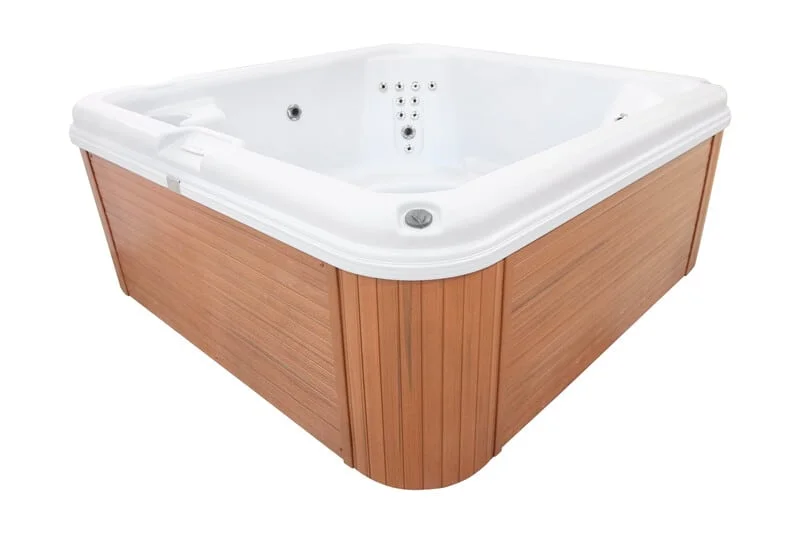
Rotomolded Plastic
If you’re wondering what is the best portable hot tub, these plastic hot tubs are less expensive and lighter than acrylic. They have a matte finish as opposed to the glossy finish of an acrylic spa. They are typically very easy to move and relocate.
Vinyl Hot Tubs
Vinyl hot tubs are more cost-effective than many other types of hot tubs and are often lightweight and portable. They are not as durable as other types of hot tubs and may be more prone to damage and fading from chemical imbalances than are other kinds of spas. Inquire about the costs of replacing the vinyl, if that is even an option. Still, a vinyl hot tub may be worth considering if you are trying to determine what is the best portable hot tub.
Inflatable Hot Tubs
Perhaps you are contemplating an inflatable hot tub. If so, there are several factors to consider in determining what is the best inflatable hot tub or whether inflatable is even the best option for you. Inflatable tubs vary from manufacturer to manufacturer. That doesn’t necessarily mean one is superior in all respects. A common issue with inflatable hot tubs is that many, if not most, have very small filters. This may require not merely cleaning the filter more often but replacing it more often, in some cases weekly.
Other factors to consider in determining what is the best inflatable hot tub:
- Inflatable hot tubs require a little more energy to maintain the water temperature. So look for a hot tub with a well-insulated lid.
- Does the tub have a heater? If so, will it keep up in your climate? It may be more challenging for an inflatable hot tub to heat up and maintain the water temperature in a cold climate in comparison to other types of hot tubs.
- Do you have a proper power supply that’s at least 12 feet away from the hot tub? If your hot tub will be further away, what is the length of the hot tub’s cord? You should never use an extension cord with an inflatable hot tub.
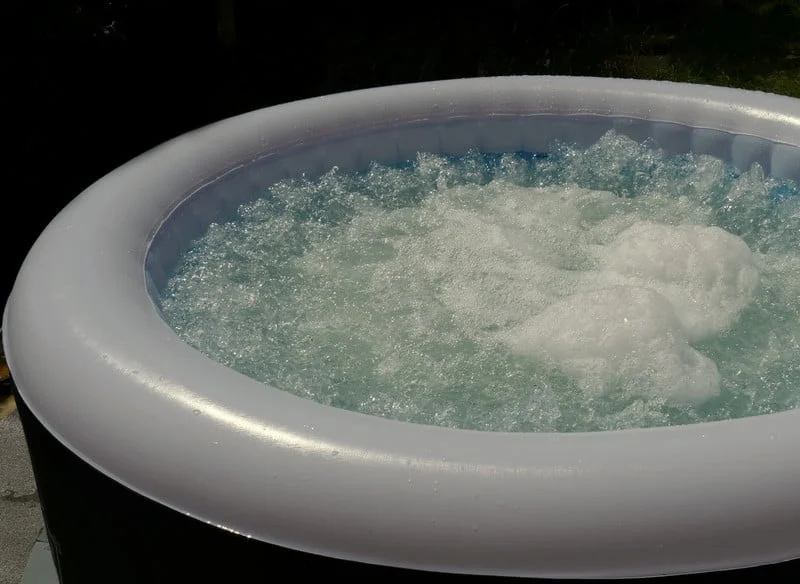
Wooden Spas
These are the original and classic, barrel-style ‘hot tubs.’ Often made out of cedar, these spas may have a vinyl liner, or the interior is the wood itself. Two common factors to investigate when considering a wooden spa are maintenance requirements and ensuring that insulation values are appropriate for the climate in which you will use the spa.
INSULATION
Of the different types of hot tubs, what is the best hot tub to buy? One that is insulated for the particular environment in which you will use it. For example, spas that are very well insulated but are located indoors or in climates where it is warm year-round may get too hot and shut down. That is because the insulation prevents the waste heat from the pump motors from dissipating. On the contrary, in colder climates, ensure that the insulation is adequate—that way, the heater does not have to work more than necessary.
For example:
- Suppose the spa is insulated with pink fiberglass insulation. Is it installed in such a manner to get around all of the plumbing, with no gaps, allowing it to maintain a high R value? If so, is an air-tight vapor barrier surrounding the insulation?
- If the spa is insulated with spray foam insulation, is the foam thick enough to be effective? Some spa manufacturers will use more or less foam depending on the climate in which you will use the spa. Make certain the thickness of the spray foam is suitable for your location.
- If spray foam insulation has been used, is it a closed-cell foam or open cell foam? If there was a leak, will one form of foam allow you to find a leak more quickly and easily than the other?
- Is the spa insulated with perimeter insulation? This is an insulation that goes around the spa, typically just inside of the cabinet walls. Is the insulation suitable for your climate and location?
- Is the spa insulated with Mylar insulation? Will this be suitable for your environment?
PARTS
As your spa ages and requires maintenance, will the replacement components such as control panels, jets, heating elements, and other components be readily available to you?
Some spas are built using components manufactured by companies that supply common parts to several different spa manufacturers. In contrast, some spa manufacturers use proprietary components produced for their own brand of spas.
Does the manufacturer have a plan in place to maintain a supply of proprietary parts for a certain number of years? These often make for the most reliable hot tub brands. Could alternate replacement parts be used if original parts are not available? This is another critical factor in how to choose a hot tub.
PLUMBING
When considering how to buy a hot tub, the plumbing is an important factor. Ask the following questions to ensure you purchase one of the most reliable brands and one that will provide an enjoyable bathing experience.
To reduce the possibility of leaking, investigate how are the plumbing lines and fittings are secured? Are they glued, clamped, or a combination of gluing and clamping?
What plumbing distribution system is the plumbing based on? Various configurations can yield different and varied water pressure coming from the jets. For example, spas configured with a head manifold, where plumbing lines from the jets each go directly to a head manifold, may provide a different experience than a ‘trunk and branch’ configuration. Regardless of the configuration, make certain enough water pressure comes from all of the jets for your requirements.
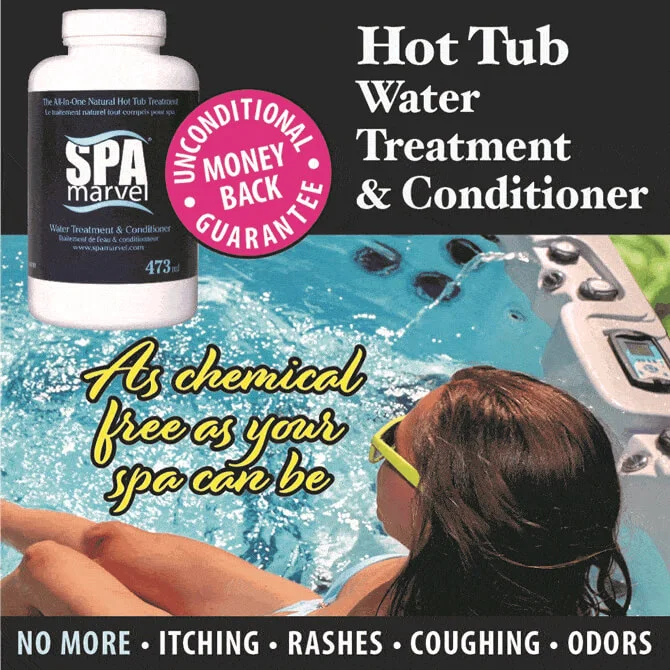
HEAT RECOVERY SYSTEM
The electric pump motors generate heat. Some spas use the waste heat from the pump motors to heat the water to increase proficiency. Ask about how the waste heat is used to make the spa more efficient.
FILTRATION SYSTEMS
Some hot tubs have one filter, while some have more than one, either of which is good. A hot tub filter removes debris from the water. It does not have any effect on viruses and bacteria. The filter will not affect how safe the water is because the filtered water is immediately mixed with the tub’s non-filtered water. A single 50 square foot filter is usually sufficient. The flow rate through the filter is a more important consideration. The best type of hot tub will have a high-flow filtration system. This is more important than the size or number of filters because it will turn the water over quicker and more effectively.
- Hot tub filters can filter down to as little as 1 micron, which is enough to capture most of the debris introduced to the water but not enough to remove pathogens such as viruses and bacteria or affect the water’s biological health.
- Hot tubs can come with one or more filters depending on the design of the spa. The number of filters on its own isn’t notable. But when comparing spas, you should consider a couple of things when it comes to filtering:
- The flow-through rate. In other words, how many times an hour is the water filtered.
- Filter capacity. How many square feet of filter media are there? More filter media will usually mean that the filter can accumulate more debris before needing to be cleaned.
There are two types of filtration systems found in various kinds of hot tubs:
1. Suction side filtration. This filters the debris out of the water before it goes through the pump, heater, and other equipment.
2. Pressure side filtration. This will allow debris to pass through the pump, filter, and other equipment before it is filtered out of the water.
Is there a benefit to either system? Does one system have different effects on equipment or water quality over the other?
THERAPEUTIC NEEDS VS ENTERTAINMENT NEEDS
How to Buy a Hot Tub for Therapeutic Needs
If you are purchasing the hot tub for therapeutic reasons, there are several things to consider:
- Interior configuration. Are the seats positioned where you need them to be, and are they comfortable? For example, do you need a lounger, or do you need seats to sit straight up in? Are the seats/lounger comfortable? Do you need a tub with no seats or equipment so that movement is not restricted?
- Jet configuration. Do you need neck jets or foot jets for your therapy? Are jets positioned where you need them to optimize your therapy?
- Is there enough room in the spa to practice the therapy?
- Is the pressure from the jets strong enough for your needs?
- Is there the ability to control each individual jet’s pressure?
- Are the jet styles suitable for your needs? Do you need different types of jets for your therapy (i.e., pulsating jets, swirl jets, mushroom jet), and if so, can they be interchanged?
How to Buy a Hot Tub for Entertainment
If you are purchasing the hot tub for entertainment, consider these factors:
- How many people does it need to hold – If it is too small and you put too many people in, then the water will overflow, and bathers may not be comfortable.
- Does it need to have a stereo system or television?
- Does it need to have underwater lighting?
- Do you need a lounger?
- Interior configuration; should it have a lounger? Should it be barrier-free?
- Is there room to allow for the placement of drinks on the edge of the spa?
LOCATION FOR A HOT TUB
As mentioned previously in this hot tub buying guide, there are different types of hot tubs. Your hot tub’s location can be a determining factor in what is the best hot tub to buy.
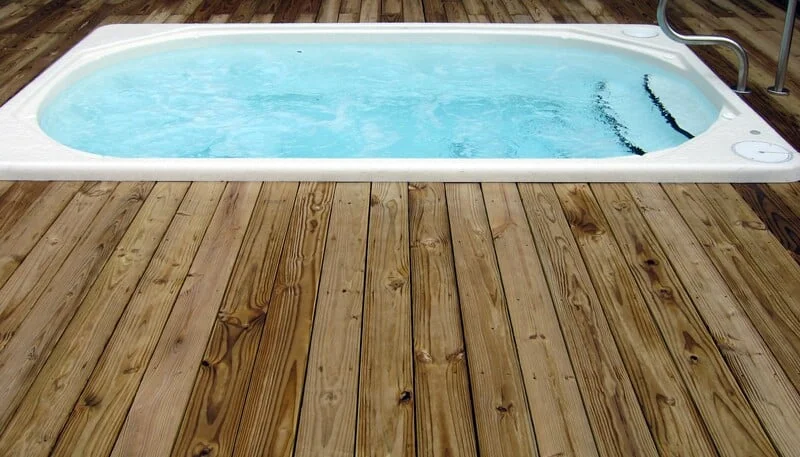
Will it be indoor or outdoor? Suppose it is outdoors in a northern climate. In that case, it must be built with enough insulation to make it economical to heat in the dead of winter.
Will it fit where you want it to go? Is there enough space to accommodate it on your deck? Will it fit through the doors into your rec room or down to the basement. If it is going in the backyard, can you get it around the house, or will you need a crane? Will your deck support the weight of a full tub with people in it, or do you need to have the deck reinforced?
Is there enough height to accommodate the lid when it is opened? If the spa is under a low deck or a tree, will the cover hit anything when opened?
Will the spa be moved at all? Is it going to be at a vacation home in the summer and at your residence in the winter? If so, you need to decide what is the best portable hot tub for your situation. You might want to consider a plug-and-play portable spa.
Can you get the required electricity from your electrical panel to your spa’s location? Some spas draw 220, others 110.
Are there any bylaws, condominium rules, or HOA rules that prohibit or restrict the use or placement of a spa?
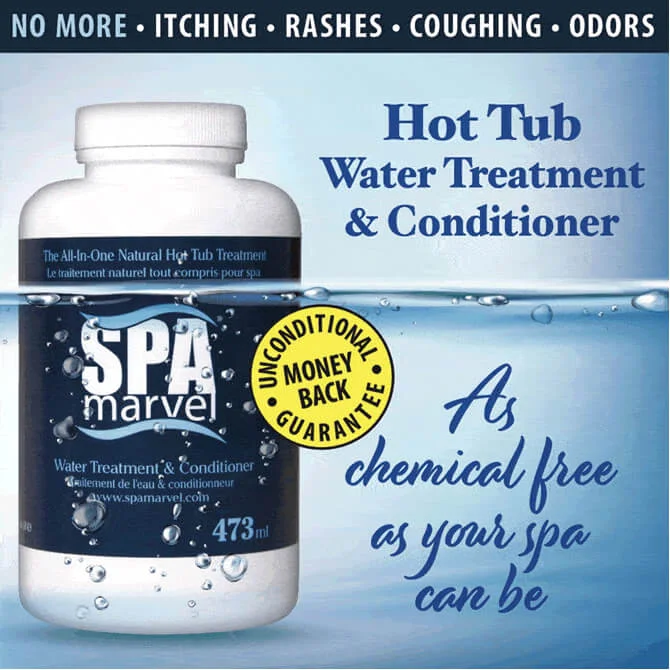
ACCESSORY COMPONENTS
Some spas come with specialized accessory components. The following will help you understand how to buy a hot tub with these features.
Salt Water Hot Tubs
Although often marketed as ‘chemical-free,’ saltwater spas use a form of salt, either sodium chloride (table salt) or sodium bromide, to generate chlorine or bromine. So consider maintenance costs for the equipment. Is anything near your spa, such as metal patio furniture, that could be negatively impacted by exposure to any saltwater that it may come in contact with? Are there any components within the spa that could be negatively affected by long-term exposure to salt?
Ultraviolet
An ultraviolet (UV) system is plumbed in-line in your spa’s plumbing. It uses ultraviolet light to eliminate microorganisms, lower chemical usage, and eliminate toxic by-products.
Ask about maintenance costs associated with the upkeep and maintenance of an ultraviolet system.
Ozonator
An Ozonator in a hot tub produces ozone gas to help to keep the water biologically safe.
Ask about maintenance costs, the effects the ozone gas could have on the lids and the spa shell, and any health concerns you should be aware of when using ozonation.
WARRANTY
It might seem that the most reliable hot tub brands would come with the best warranty. But the warranty is not necessarily indicative of quality. In many cases, the manufacturer will make a simple cost/benefit calculation regarding the cost of quality vs. the warranty service cost. When looking at hot tub warranties, ask the following questions:
- Is a call-out charge included? In other words, might there be additional charges for service calls during the warranty period?
- What components does the warranty cover?
- Does it cover part and labor.
- Does it cover 100% of the warranty period’s costs? Or is the warranty prorated, and if so, what limitations are there?

IN CONCLUSION, WHAT IS THE BEST HOT TUB TO BUY?
The final topic in this hot tub buying guide is what is the best tub to buy? To say one brand is the best is an all-encompassing statement – the best warranty, best insulation, most economical, best price, strongest jets, and so forth. But no one spa is superior in all categories.
To complicate this question further, how do we determine the parameters for what is the best hot tub to buy? For example, one dealer may believe they have the best insulation. Perhaps their insulation type is excellent at insulating in a scorching climate like Arizona, where it reaches 120 degrees in the summer. Yet, the insulation may not be suitable for insulating in Canada or Alaska’s below-freezing winter temperatures. As you can see, ‘best’ for even a specific component has variables.
Another factor that poses a problem in determining what is the best hot tub brand or type is that beauty is in the eye of the beholder. Among the different types of hot tubs, a particular type or brand may not be the best kind of hot tub for everyone. A portable hot tub that you can move indoors in the winter and outdoors in the summer may be the best type of hot tub for you.
What is often the best hot tub for the money is the one that fits people’s budget. Or perhaps it’s the one that physically fits into the tight spot on their deck or fits down the stairs into their basement. This can be a critical factor in how to choose a hot tub.
You can also have the world’s best spa for your needs. Yet, if there is no dealer support, it will be a terrible spa. It’s basically like having a Tesla in a country with no Tesla technicians or service centers. It may be a great car – but what do you do when it breaks?
Ultimately, what is the best hot tub brand and the most reliable hot tubs boils down to several variables unique to each spa owner and their situation. Such factors include geographical location, physical placement, purpose, individual taste, and more. In other words, what is the best hot tub for the money depends on what best suits your needs. So, if you read a hot tub guide that makes specific recommendations as to what is the best hot tub brand, take it with a grain of salt. Remember, it’s essential to weigh out how well the spa meets your particular needs and situation.



